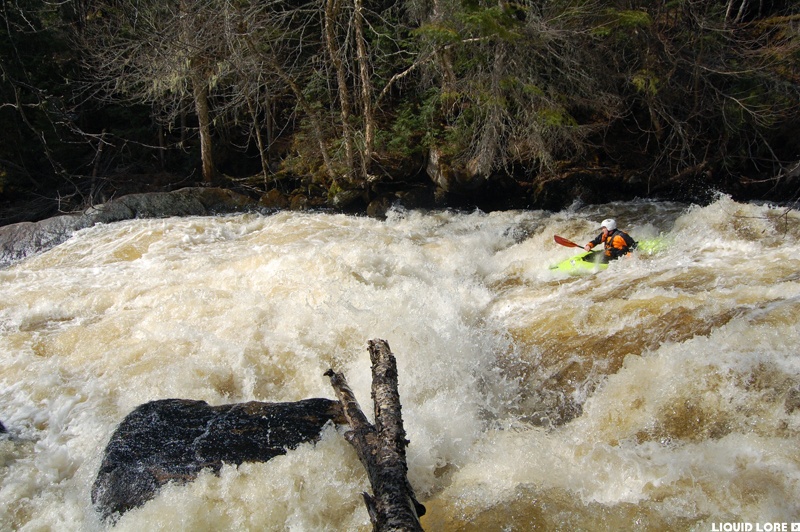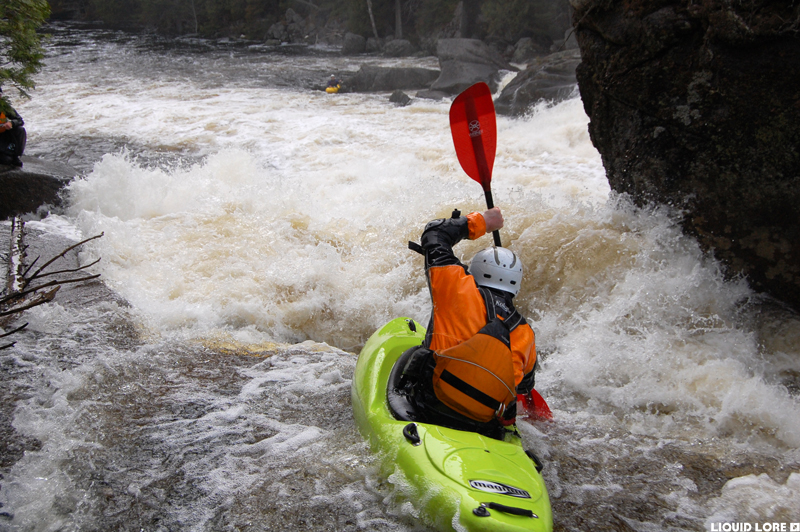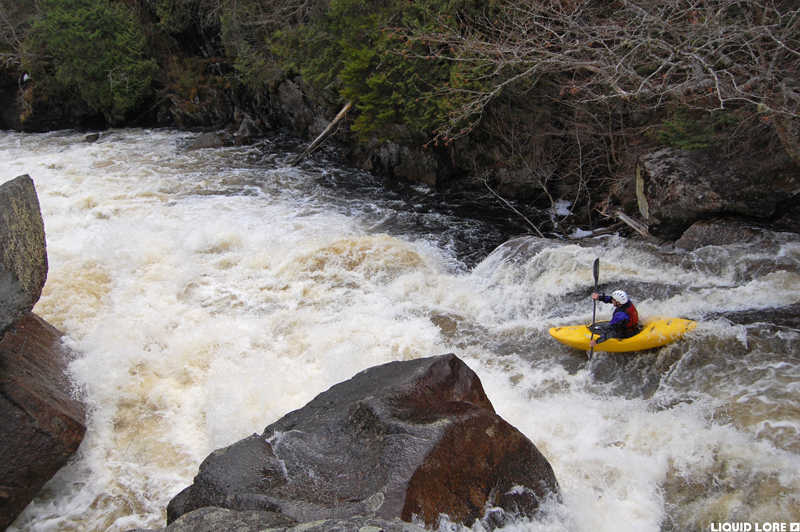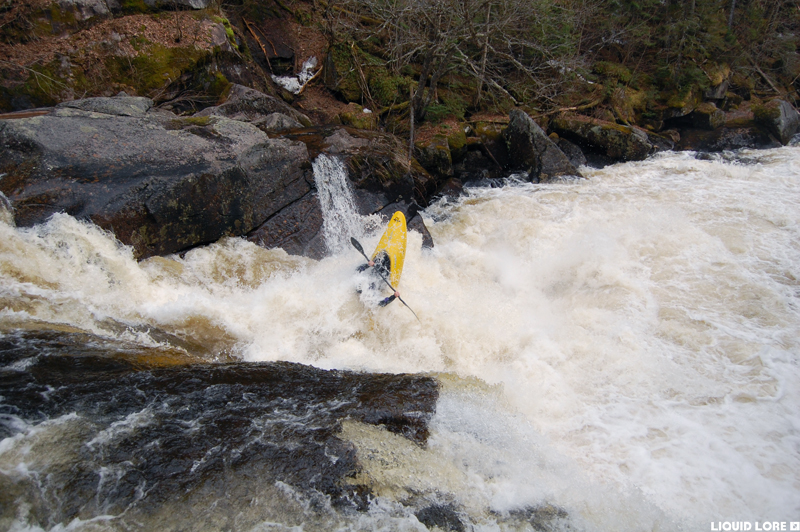Vitals
- Locale: Saint Raymond, Quebec
- What It's Like: Excellent river running. A lengthy run with high quality rapids and a wide flow window.
- Class: IV at low water all the way up to class V at high flows.
- Scouting/Portaging: Easy to moderate.
- Level: Gauge found here - multiply the reading by 0.60.
- Time: 2-6 hours.
- When To Go: Snowmelt: April through June, or after rain.
- Info From: Many visits.
- Other Beta: None.
- Map: Click here for the river and here to get there.



Description
This page was last updated in November 2010 and it is not regularly maintained. Information may be inaccurate.
The Neilson is a mainstay of the kayak scene near Quebec City. There's not a lot to say aside from it is a fantastic, high quality whitewater run with something for everyone. At lower levels it is a great class IV paddle with innumerable rapids and almost no flat water. It gets progressively harder as levels rise and at high water it's a freight train class V run that tests both skill and nerve. It's popular for good reason and can't be missed if you're around Quebec when it's running.
There is a good online gauge for the Neilson on the Bras du Nord de la Riviere Sainte Anne (North Arm of the Sainte Anne - the Neilson is a tributary). For unknown reasons rather than just relating river levels to the raw gauge data the Quebec-based online flow webpages report river levels as fractions or multiples of this raw data, depending on the river. The level on the Neilson is typically reported as 60 % of the above gauge.
The Neilson is runnable over a wide range of flows and will appeal to a wide range of boaters. It's possible to smash it out at 10 cms. 10-20 cms is low but doable. 20-40 cms is a good medium range - these flows are probably the most popular levels for paddling. Anything over 50 cms is high. Despite what you might hear everything from the put in to the take out bridge is runnable at levels upwards of 75-80 cms, and certainly even higher than this. Prior runs are recommended before attempting it at these very high levels. There is a visual gauge on a rock upstream from the take out bridge.
The Neilson is near the town of Saint Raymond. Leave town heading east on the road north of the Riviere Sainte Anne (Rang du Nord) . Turn left on Rang Saguenay. This road turns to dirt and eventually you will get to the entrance of the ZEC Neilson-Batiscan - there is a small entrance fee. A few hundred meters past the entrance there is a bridge over the river which is the take out. Follow the river right road upstream. There is an upper take out a few km up at the first point the road rejoins the river. The put in is about 10 km up from here - follow the signs for Lac Neilson and stay right at any major forks. The road will slowly descend back down to the river - put in when the river is next to the road where it is flat water.
The flat water at the put in doesn't last for long. Some warm up quickly turns in to fun pool drop whitewater that is usually easy to boat scout. The first big rapid of the trip comes as a definite horizon line where you can't see the bottom of the rapid. This rapid - Le Picard - is the biggest in the upper stretch of the river. It's easiest to scout on the right, but if you decide to portage you should do it on the left, putting in to run the last part of the rapid.
Below Le Picard the whitewater picks up noticeably with a seemingly endless barrage of long rapids. It is an excellent section where everything can be boat scouted and read-and-run if you're comfortable doing so. Eventually the pools start to get longer and you will reach the upper take out shortly after passing by a rapid with a sneak/slide on the left and a big boof on the right. The upper take out is immediately above the large rapid you can see from the road on the shuttle drive.
The lower section of the river is characterized by pool drop rapids that are generally larger and harder than those above the upper take out - if you're scared on the upper river don't bother to continue. Everything is easy to scout and portage. The river ends with some easy boulder gardens down to the take out bridge where you can celebrate having run this Quebec classic.
 A vintage photo of Le Picard at around 25-30 on the gauge.
A vintage photo of Le Picard at around 25-30 on the gauge.
 The entrance of Le Picard at about 50 cms.
The entrance of Le Picard at about 50 cms.
 A slide below the upper take out. The dangerous main line on this one is on river right.
A slide below the upper take out. The dangerous main line on this one is on river right.
 Another slide - this photo does no justice to this rapid.
Another slide - this photo does no justice to this rapid.
 The double drop - the bottom hole makes a lot of people swim.
The double drop - the bottom hole makes a lot of people swim.
Updated Nov 22, 2010

